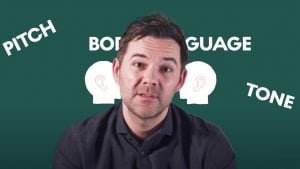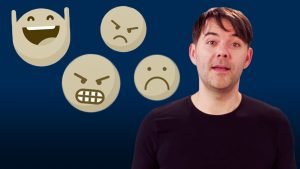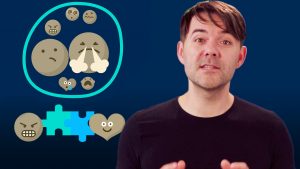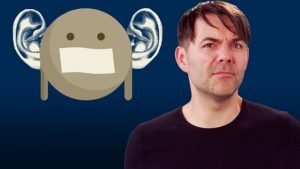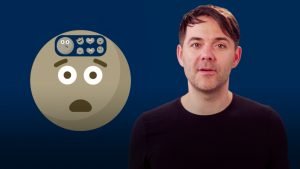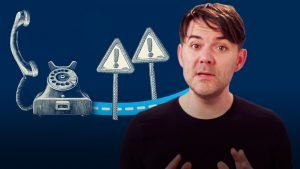
Better Conversations
Better Conversations provides an in-depth introduction to skills necessary to conduct difficult conversations about potentially sensitive local and global challenges. With these skills under your belt, you can productively engage with the Doha Debates materials. Try our four step process: Prepare + Engage + Reflect + Act to practice and integrate each skill. For facilitators and teachers, download the curriculum for more in-depth group activities.
01. How to Get Along with Other People
How to get along with other people
Prepare: What are the qualities of a productive conversation? What makes for a good conversationalist? Share your ideas with others, and find out what they think.
Engage: Watch the video and make a note of each step outlined by Dr. Govinda Clayton.
What does the step entail? Give an example of what this might look like in practice. What are some of the challenges involved? Have you ever used any of the steps mentioned in a conversation? Which ones? How did it go?
Reflect: Think about some of the difficult conversations you have had that ended on a positive note, or ones that didn’t and how they could have. Do you think any of these steps could be useful in group projects? Which ones and why?
Act: Think about a difficult conversation you have coming up, perhaps one that you have been avoiding. Invite the person you need to talk to out for coffee, or to a video call. Before the call, review the steps and make some notes including your goals for the outcome, what you are curious to know more about, and what your interests are in the issue. Show up for the conversation, and do your best. After the conversation, make a few notes about what you did well, how it all felt for you, and what you want to improve!
Full lesson plan for educators: How to Get Along with Other People
02. Set Clear Goals
Better Conversations: Set clear goals
Prepare: What are the qualities of an unproductive conversation? Share personal examples, how they ended and why you think that was. Share your ideas with others, and find out what they think.
Engage: Watch the video, and make a note of ideas outlined by Dr. Clayton.
What does goal setting entail? Give an example of what this might look like in practice. What are some of the challenges involved? Have you ever used any of the steps mentioned in a conversation? Which ones? How did it go?
Reflect: Consider the three points Dr. Clayton makes about goal-setting to consider both perspectives, share how you feel and work together toward a solution. How might understanding the other person’s perspective change the outcome of the conversation?
What are the factors you can and can’t control in situations where the other person may not share your views? If “setting out to change someone’s mind rarely works,” then what is the purpose of engaging in better conversations?
Act: Return to your examples of past unproductive conversations and write down a goal to set for a better outcome. How could your goal have helped make the conversation more productive? How might you have worked together to find a way forward? Next time you have the opportunity, practice goal-setting!
Full lesson plan for educators: Set Clear Goals
03. Manage Your Emotions
Better Conversations: Manage your emotions
Prepare: Recall past experiences in which your emotions got in the way of having a productive conversation. How did your emotions manifest in your body language or your voice or your words? Share your ideas with others, and find out what they think.
Engage: Watch the video and note what stood out most for you. What does Dr. Clayton mean by “hidden emotions?” Break down the different manifestations of emotions into the three categories and give personal examples of underlying emotions in tough conversations.
Reflect: Have you ever noticed an overwhelming urge to blame others? What physical symptoms have you noticed when in a difficult conversation? What might be the underlying emotions? Choose one of the categories that applies most to you and share how you’d like to control how you express that emotion.
Act: Based on your shared experiences, build a list of some productive ways of how to manage emotions when they manifest in your words, body language or voice. Build the image of this list in your mind, and use it the next time you are facing a difficult conversation.
Full lesson plan for educators: Manage Your Emotions
04. Understand Their Story
Better Conversations: Understand Their Story
Prepare: What does it feel like when your side of the story in a conflict is not understood? Share some personal examples of this and listen to the experiences of others.
Engage: Watch the video and note what stood out for you. What does Dr. Clayton mean by “address your problem as the gap between stories?” Identify some strategies to better understand someone else’s story.
Why might paraphrasing the other person’s responses to your questions be helpful?
Reflect: Why might it be challenging to accept that both versions of the story might be true? Imagine what might be underlying those different versions. If you accept this, how might it change how you speak with others in difficult conversations?
Act: Note any areas where you could improve your ability to understand someone else’s story and make a commitment to work on them with strategies that best apply to your tough conversations. If you think about it in advance, you will be ready when an opportunity arises.
Full lesson plan for educators: Understand Their Story
05. Master Listening
Better Conversations: Mastering Listening
Prepare: What makes a conversation go really well? What does it mean to listen? What does it mean to be heard? Share your ideas with others, and find out what they think.
Engage: Watch the video and note what stood out most for you as particularly meaningful or surprising. How is saying you understand different from saying you want to understand? What kind of questions can you ask to show that you want to understand someone’s perspective?
Reflect: What are the challenges of imagining a world where conflicting stories can coexist? What are the benefits? Has there ever been a time when you felt your conversation or perspective was misunderstood? Replay that scenario in your mind incorporating some of Dr. Clayton’s advice to change the outcome.
Act: Take Dr. Clayton’s “conversation superpower” challenge. Call up the “worst listener you know” and practice listening deeply. Ask questions, focus on their feelings, don’t react to their emotions. See what happens!
Full lesson plan for educators: Master Listening
06. Body Language Matters
Better Conversations: Body Language Matters
Prepare: What do you know about body language? How might paying attention to this be useful in a difficult conversation? Share your ideas with others, and find out what they think.
Engage: Watch the video and note what stood out most for you that you hadn’t thought about before or that surprised you. What are the different aspects of body language and what we can learn from what people do with their: legs and feet, arms, mouth, eyes.
How do you think body language might differ between cultures? Do you know of specific examples? How do you think those differences might impact a conversation and what might you do if you misread the body language of someone from another culture?
Reflect: What do you think it would be like to pay attention to body language in a difficult conversation? What would be the benefits and challenges?
Act: Try paying attention to body language in a conversation. Take notes afterwards- what did you notice in yourself? What was the other person “saying” with their body language? How can you use those observations to improve your communication going forward?
Full lesson plan for educators: Body Language Matters
07. Change Your Approach
Better Conversations: Change your approach
Prepare: Recall or imagine a difficult conversation with a friend about a social or political issue you feel passionate about; one where you disagreed vehemently on one point and just keep arguing about it. Brainstorm some strategies you might use to move the conversation forward.
Engage: Watch the video and note the three “hacks” shared by Dr. Clayton. How is the disagreement with your friend (above) like the open/shut window? What are the underlying interests on both sides? What solutions might satisfy both parties? How could you reframe it? Did the visuals in the video help you to understand reframing?
Reflect: What is the little voice Dr. Clayton is referring to? What makes it louder? Can you think of other ways to “get out of your head and focus on the present?” How does that benefit a difficult conversation?
Act: What do you think are the biggest challenges of using these strategies? Reach out to a friend or relative with whom you don’t see eye-to-eye. Use the strategies here when things heat up and note how things go.
Full lesson plan for educators: Change Your Approach
08. End on a High Note
Better Conversations: End on a high note
Prepare: Think about conversations you’ve had in the past that ended badly. Why do you think that was? How might you have ended them differently?
Engage: Watch the video and note what stood out for you that you hadn’t thought about before or that surprised you. What is the difference between ending and completing a conversation? Review the three steps to completing a difficult conversation and how you would apply them to personal situations of your own. Can you give examples?
Reflect: What do you think it would be like to intentionally end a difficult situation on a positive note? What would that contribute to the conversation?
Act: Do you agree that it’s important to end on a positive note? Why or why not? Give it a try the next time you find yourself in a tough conversation with polarized viewpoints.
Full lesson plan for educators: End on a High Note
About Deep Dive
Doha Debates hosts discussions on the world’s most pressing challenges to bridge differences, build consensus and identify solutions. In each moderated live debate, experts share their experiences and propose concrete plans. Doha Debates also offers digital resources such as videos and articles to help students build a deep understanding of the issues and to foster ongoing conversations.
